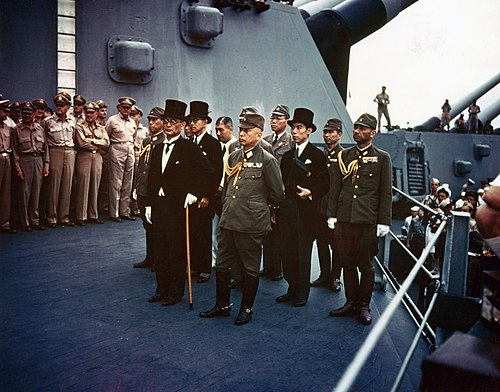Starcross History Society
History in Starcross, Devon UK
Monday, 14 July 2025
Refloating The Ship Inn
Friday, 9 May 2025
VJ Day
- Celebrations:The news of Japan's surrender sparked widespread celebrations, similar to those on VE Day. People took to the streets, engaging in bonfires, dancing, and fireworks
- Royal Family's Role:
- King George VI and Queen Elizabeth traveled to Westminster for the opening of Parliament, where they were greeted by cheering crowds. King George VI also made a broadcast to the nation at 9 pm, commemorating the victory.
- Public Holiday:
- The government announced a two-day public holiday (August 15th and 16th) to allow people to celebrate the end of the war.
- Official Declaration:
- While the formal surrender ceremony took place on September 2, 1945, the Allies celebrated the news of Japan's acceptance of surrender on August 15, making it VJ Day.
Monday, 5 May 2025
NOW & THEN : COVID-19 and VICTORY IN EUROPE [VE] DAY 1945 & STARCROSS
[written in 1920 to commemorate the 75th anniversary of VE Day]
Now
We are at war with a deadly enemy: Covid-19 aka Coronavirus. When it is beaten celebrations will be on a monumental scale.
Then
Twice in Starcross’s history there have been two such celebrations: The end of World War 1, 11th November 1918 [news arrived in Starcross on the 15th] and the end of World War II from 7th-12th May 1945. How did Starcross celebrate in 1945 Victory in Europe [VE Day, 8th May] over the Nazi alliance? What stories can we tell about the Starcross celebrations? Who was involved?
Monday 7th May. The B.B.C. 8 o’clock evening news announced Germany had surrendered – the war in Europe was over. Ten minutes later the Union Jack was flying from the Atmospheric Pumping Station tower in Starcross. The wonderful news spread like wildfire through the village – almost immediately flags were displayed in most houses.
Tuesday 8th May – VE Day School opened as usual; it was to close for two days following Prime Minister Winston Churchill’s speech later in the day. At 9 o’clock the school pupils and staff assembled: the Union Jack was broken out and all sang the national anthem. The morning was spent decorating the school with flags and buntings, probably stored since Queen Victoria’s jubilee and the victory in World War I celebrations.
At lunchtime there was a celebratory school lunch for all children in the locality. The meal included specially bought buns and the emergency meat ration. 20 extra meals also arrived from Dawlish to feed additional children from the local area who came to the school, although presumably not Starcross pupils who were already provided for.
By 3 o’clock in the afternoon the children, staff and many villagers had assembled on the School House lawn to hear Churchill’s speech celebrating Victory in Europe – the school may well have had the only publicly available radio in Starcross.
The children spent the rest of the day collecting all kinds of combustibles for a giant bonfire that that evening. On it the villagers burned two effigies of Hitler – one of him on the gallows, the other with him in a chair. There was also a well-attended evening thanksgiving service in St. Paul’s. Church
Wednesday, 9th May VE Day Plus One [first of two days of public holiday]
In the afternoon about 30 children under 14 had a grand tea at Courtenay terrace. Coloured table clothes and vases of flowers contributed to the gay scene. They played all sorts of games of all sorts. Later, baskets of surplus food were taken to the almshouse for the old folk there.
The day’s main event was a parade through the streets with a striking tableau on a horse drawn wagon of Britannia, America, Russia and Sailor Boys. At the parade’s head was the British Legion Banner and individual representatives of the police, the Home Guard, the Women’s Voluntary Service and the band of the Royal Western Counties. Following behind the tableau were members of the army, navy and airforce, including a repatriated prisoner of war who had arrived in Starcross the day before, a nurse, housewives, the Starcross Girl Guides and Brownies, the Youth Club, Red Cross, Home Guard and Civil Defence.
The parade stopped outside the railway station with almost the whole village present. The procession marched to St. Paul’s Church for a thanksgiving service. A street party began that lasted until midnight. That evening there was also a well-attended whist drive and dance in the Recreation Hall, Royal Western Counties Institution and a second celebratory bonfire.
Thursday, 10th May
Festivities continued on the 10th May. The village gave all children under 16 another tea, see L.S. Lowry painting – page 2. The Vicar said that in singing the blessing they not only giving thanks to God for the food they were to receive but also for the blessing of peace in Europe. Games took place with piano accompaniment.
A high tea for the over 65s followed. Vera Raven, from Exeter, gave a recitation ‘entitled “Comfort”, her impression of a ‘Cockney girl at the cinema” and “A tribute to the National Fire Service,” written by herself.’
Saturday, 12th `May
A “Those were the Days” dance took place in the Reading Room Starcross in aid of the “Welcome Home Fund” ‘and it being Victory Week there was a record crowd.
Sources
Starcross Primary School log books, 1945
Oral testimony from those who remember VE day celebrations in Starcross
Local newspapers – accessed via British Newspaper Archive https://www.britishnewspaperarchive.co.uk/
L.S. Lowry V.E. Day celebrations
Jon Nichol
Link to today's VE Day celebrations in Starcross Royal British Legion





